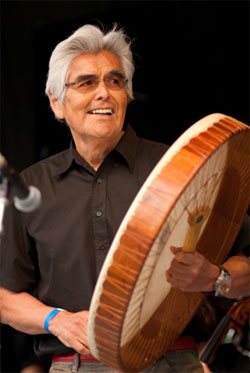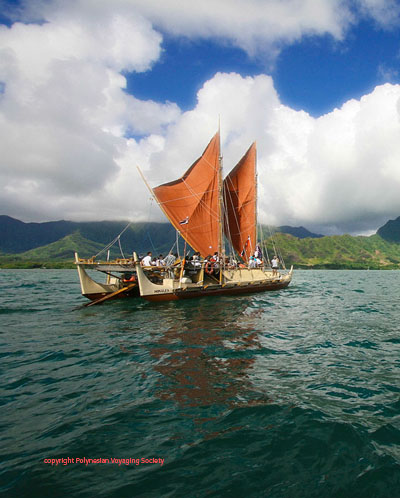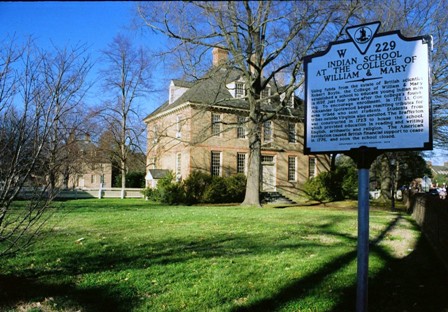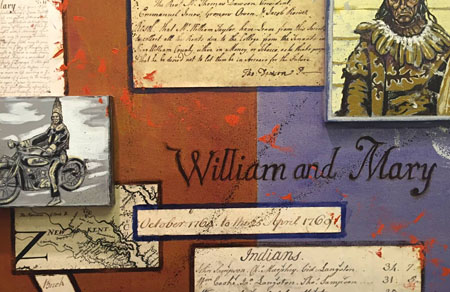Our Work
Current Projects
 On March 23, 2016 Robert Davidson of the Haida People will give a presentation at the Sadler Center, Commonwealth Auditorium from 5:00 to 6:30 pm. Davidson's passion to revive and perpetuate a variety of forms of Haida cultural expression, including song, dance and ceremony, has fueled his remarkable out put. He has been responsible, among other things, for carving and raising the first totem pole in his hometown of Massett, Canada, in nearly 90 years when he was just 22 years old.
On March 23, 2016 Robert Davidson of the Haida People will give a presentation at the Sadler Center, Commonwealth Auditorium from 5:00 to 6:30 pm. Davidson's passion to revive and perpetuate a variety of forms of Haida cultural expression, including song, dance and ceremony, has fueled his remarkable out put. He has been responsible, among other things, for carving and raising the first totem pole in his hometown of Massett, Canada, in nearly 90 years when he was just 22 years old.
The AIRC is very pleased to help sponsor this event. For more information on this event, please go to http://www.wm.edu/as/center-liberal-arts/campus-coll300/coll300-an-innocent-gesture.php

Arrival of the Hokule’a
The American Indian Resource Center is pleased to announce that we are working with the Polynesian Voyaging Society to welcome the arrival of the Hokule’a to the Yorktown waterfront on April 24, 2016. The Hokule’a, a traditional Polynesian voyaging canoe, began a global journey in 2013 using traditional methods of wayfinding to impart the mission of malama honua – “caring for Island Earth.” Hokule’a’s crew has stopped at numerous ports around the world to host workshops on sustainability and traditional knowledge, and to offer visitors the chance to see the canoe.
Along with our Native contacts Debora Moore, Ashley Atkins Spivey, and the people of Pamunkey, we will be coordinating the Indigenous Welcome Ceremony----a meeting between the First Peoples of Virginia and their indigenous Hawaiian counterparts.
The event will take place at 1 PM on Sunday, April 24 at Yorktown’s Riverwalk Landing. The public is welcome and encouraged to attend this special event. To find out more about the Hokule’a and its groundbreaking voyage, please visit the Polynesian Voyaging Society’s website (http://www.hokulea.com/wwv/), and watch the video at: https://youtu.be/tRHtu8rCAC0
The Brafferton Project
'The Brafferton' is one of the oldest buildings on the campus of William and Mary. It was  built to house a charitable arm of the College, a school for Indian boys, with the aim of returning them to their native tribes as bearers of the Gospel. It stands as a symbol of the tangled relationship between natives and new comers in Virginia's history, and the special role played in that relationship by the College.
built to house a charitable arm of the College, a school for Indian boys, with the aim of returning them to their native tribes as bearers of the Gospel. It stands as a symbol of the tangled relationship between natives and new comers in Virginia's history, and the special role played in that relationship by the College.
The American Indian Resource Center is part of a collaborative group of scholars and native representatives created by William and Mary to explore the meaning and enduring legacy of this history. One of the results is the exhibit Building the Brafferton: The Founding, Funding and Legacy of America’s Indian School, which will be displayed at the Muscarelle Museaum of Art from September 9, 2016 through January 8, 2017

Constructed in 1723, the Brafferton Indian School remains a strong visual symbol on the campus of the College of William & Mary. This is the first exhibition to examine the history of the Brafferton within the wider trans-Atlantic networks of trade, the politics of church and state, and Great Britain’s colonial enterprise in North America. New research on the Brafferton connects Indian students from the Pamunkey, Cherokee, Nottoway, and Wyandot tribes, to wider narratives of our shared past. Historical paintings, engravings, archival documents, and contemporary Native American Art, are assembled to explore the founding, funding, and legacy of one of the nation’s oldest and most esteemed institutions of higher learning.
Here is where you can learn more about the Brafferton and the Brafferton Project
Podcast Series
A series of interviews with Native people involved in contemporary American Indian issues, including discussions of their past and experiences.
Patowomack Ethnohistory and Contemporary Ethnography
Undergraduate and graduate History, Anthropology, and American Studies students are working in collaboration with the Potomac descendant community in Stafford and King George Counties, Virginia.
Others
Multiple ethnohistorical and educational projects with the National Park Service, and ongoing multiple research and cultural heritage projects with members of the Kiowa, Muscogee, Mohawk, and Tlingit Nations.
Past Projects
Collaborative Work with the Pamunkey
Students worked with the tribe's Museum Committee to update the Pamunkey Indian Museum and Cultural Center (2012).
Kiowa Five
Exhibit on the work and legacy of the Kiowa Five (2011).
The Jamestown Memory Project
The Center participated in the Williamsburg Regional Library's effort to capture experiences of area residents during both the 350th Anniversary celebration in 1957 and the 400th Anniversary celebration in 2007.
Contemporary American Indian Art
The AIRC has long been engaged with contemporary American Indian art, such as the collaborative research partnership among the AIRC, the Muscarelle Museum of Art, and pre-eminent painter Jaune Quick-to-See Smith. This co-effort resulted in the exhibt Contemporary Native American Paintings and the Response to Colonization ... Anniversary of the Beginning ... Beginning of the End at the Muscarelle Museum of Art in February 2007
In Our Own Words: Voices of Virginia Indians
The Virginia Indian Oral History Project was instituted in 2000 in partnership with the American Indian Resource Center at the College of William & Mary and the Virginia Council on Indians. This documentary video is inspired by Virginia's Indian Leaders and their desire to speak to the public in their own words about the history of their people.
{{youtube:medium:center|2DpwAcv8870, In Our Own Words}}
In Our Own Words: Voices of Virginia Indians was completed with the assistance of dedicated William & Mary students in cooperation with all of the then eight-state recognized tribes in Virginia.
 Skip to main content
Skip to main content
